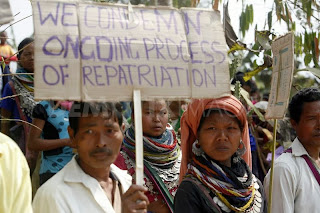
By ZODIN SANGA
An activist guards the land at Borapansury.
Aizawl, Jun 13 : The Mizo Zirlai
Pawl’s plan to build a Mizo rest house at Borapansury within the Chakma
autonomous district council in southern Mizoram has triggered communal
tension.
The MZP, an apex student organisation, has
decided to go ahead with its plan to construct the Zofate Chawlhbuk or
Mizo rest house...













